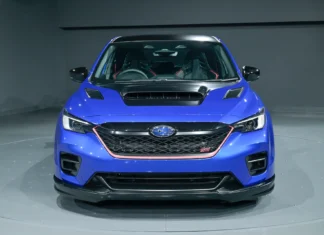Ford has another large-scale recall on its hands, this time impacting the Edge and Lincoln MKX.
If you own a 2015-2018 Ford Edge or a 2016-2018 Lincoln MKX (the precursor to today’s Nautilus), then you’ll want to pay attention to this latest recall. Last week, Ford submitted documents to the National Highway Traffic Safety Administration outlining a problem with a recall population up to 499,129 vehicles with suspect rear brake jounce hoses that could rupture prematurely. If that happens, drivers may experience longer brake pedal travel, increased stopping distances or, in the worst case scenario, suffer a crash from loss of effective braking.
More specifically, the recall affects 84,412 Lincoln MKX SUVs, while the Ford Edge takes up the remainder, with 414,717 units.
According to what the company told the NHTSA, it’s still trying to figure out the exact cause of the rear brake hose leaks. It “observed a significantly reduced rate of repair” after changing the hose’s braid material from Polyvinyl Alcohol (PVA) to Polyethylene Terephthalate (PET) in December 2017. However, the safety agency contacted Ford back in 2021 after five reports of rear brake jounce hose leaks on Edge SUVs, and Ford identified 17 warranty claims related to the issue at the time.
Ford initially closed its internal investigation into the concern in September 2024, but the NHTSA opened its own probe in October. After a meeting on July 23, 2025, Ford’s Critical Concern Review Group (CCRG) reopened its investigation, before finally deciding to open a recall this month.
To-date, Ford says it’s aware of 64 warranty claims, 3 field reports and 16 customer complaints related to leaking rear brake jounce hoses. However, there have not been any accidents or injuries directly linked to the problem.
What should you do until a repair is available?
While dealers are already aware of the problem as of August 25, owners won’t receive a notification in the mail until the week of September 8.
There’s no fix available just yet, so affected Edge and MKX owners will have to wait for repairs. For the moment, Ford has not issued a “do not drive” warning, so owners may still drive their vehicles while the remedy is under development. It is worth keeping an eye out for leaks underneath their cars or poor braking performance.
Ford Motor Company plans to send out remedy notifications no later than April 1-3, 2026, so it seems like the actual fix could still take a few months to roll out to the half-million impacted customers.
More information is available through the NHTSA’s website. (recall number 25V-544).

























